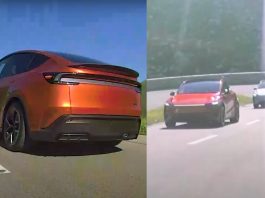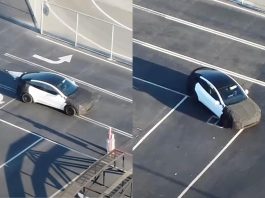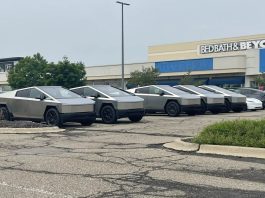Tesla’s supercharger worldwide network stations have long been considered as one of Tesla’s major advantages in the plug-in car marketplace. when the first eight supercharger stations opened in 2012, they were the fastest available public charging technology out there capable of recharging an original 85 kWh Tesla Model S from empty to full in around 75 minutes at power levels of up to 90 kilowatts. Tesla superchargers were certainly impressive at that time, they also made long-distance electric car travel truly practical and bearable.

How Fast is Tesla’s Supercharger V3
Tesla has gone from having just eight supercharger sites to more than 3,000 locations accounting for more than 12,000 supercharger stalls around the world in just seven years. Tesla improved its supercharger technology from supercharger V1 to V2 (and currently V3) to make higher powered charging possible reducing the amount of time it takes to charge up a Tesla at a Tesla supercharger.
Tesla’s superchargers maxed out at around 120 kilowatts of DC quick charge power although the charging stations themselves were technically capable of power levels of up to 145 kilowatts but as promised Tesla has launched the first of its V3 supercharger stations. Using supercharger V3, it is possible to charge at power levels in excess of 250 kilowatts or 1000 miles per hour. New battery warming routine designed to get a car’s battery pack ready to receive power at such high levels. The new supercharger V3 can cut the charge time that average customers spend at a supercharger station to almost half of the original charging time. This new technology is now live at Tesla’s Fremont factory supercharger site but not every Tesla out there has access to it straight away.
It is important to note that the 250-kilowatt charge rate of the new supercharger V3 technically currently called a public beta by Tesla. Currently, it is only available for Tesla Model 3 through new OTA software update which unlocks the faster-charging capability. Tesla has also introduced a new enroute battery warmup feature designed to precondition the battery pack to the optimum temperature for super high current charging. Tesla is going to unlock their V2 Superchargers for 145kW charge rates in the coming weeks. The Tesla Model S and Model X customers will also get the enroute battery warm-up feature baked into the next software update which combined with that extra 25 kilowatts of power should reduce existing Tesla charge times all existing Tesla superchargers by about 25%.
Tesla Supercharger V2 vs V3
Tesla’s new V3 superchargers require more power to feed them- a 1 megawatt power cabinet for 4 stalls and unlike previous supercharger sites where two stalls would power split thus lowering the charging speed if two cars are plugged into the same charging stations simultaneously where each stall will get its own dedicated 250 kilowatts supply from that one-megawatt power cabinet. The supercharger V3 units will feel the same as older V2 units to use. The only difference as you can see here is that the charging takes a lot less time.

The above graph is built off some of the early data recorded by Tesla Model 3 owners who’ve already tried out the V3 beater supercharger. The graph shows that when compared to a regular old V2 supercharger, charging speeds are a lot faster.

Here you can see, to go from around 70% to 90%, it takes almost the same for both v2 and v3 superchargers. Tesla supercharger V3 definitely faster than V2 but to take full advantage of those insanely high-power levels of charging up to 1,000 miles of range per hour according to Tesla, you’ll need to pull into your supercharger with a pretty low state of charge. Once the cars battery pack is more than about 70% or 80% full the charging power does drop off and the lower the power, the longer it will take to charge the car. This is common for every single rapid charging car out there, if you want to maximize charging speed and minimize the time you spend charging you should always arrive at a rapid charger with lowered state of charge.
Tesla Supercharger vs its future competitor
In the future, Supercharger V3 will join other ultra-fast charging networks that are currently in development. Both IONITY Network and Electrify America are developing charging stations that have an output rate of 350 kW. It is also a great sales pitch and it makes the model 3 the fastest charging electric car in the market today although it will be joined later this year by the Porsche Taycan which will be able to match the V3 charging speeds of the Tesla Model 3 at special next-generation CCS quick charging stations.
Tesla says the new enroute battery warmup combined with the V3 stations available for Tesla Model 3 and eventually, it plans to roll out V3 faster charging for Model S and Model X cars. In a world where supercharger sites are under increasing demand, this is a really smart way to ensure that people charge up and move on as quickly as possible. By the end of next year, we can expect multiple high-speed 350 kilowatts or better capable cars will be on the market.



